12 lessons about anti-counterfeiting
Vinsak was in fine form at Pamex 2024. During the show, Ranesh Bajaj of Vinsak spoke about anti-counterfeit solutions at the Innovation Pavilion. Bajaj's presentation centred on combining physical and digital technologies, which he highlighted can be used to create smart packaging.
Speaking to PrintWeek's Ramu Ramanathan, Bajaj explains how these innovative solutions will provide consumers and brands with new tools and strategies for detecting counterfeit products
15 Feb 2024 | By Ramu Ramanathan
Vinsak at Pamex: Counterfeiting poses a significant global challenge, exacerbated by the rise of online shopping. Its impact spans across industries, affecting companies of all kinds. At Pamex 2024, Vinsak offered a range of solutions, including security inks, digital inkjet, various substrates, security software, and track-and-trace technologies that can be used to develop tax stamps, various types of QR codes, guilloche, holograms and more.
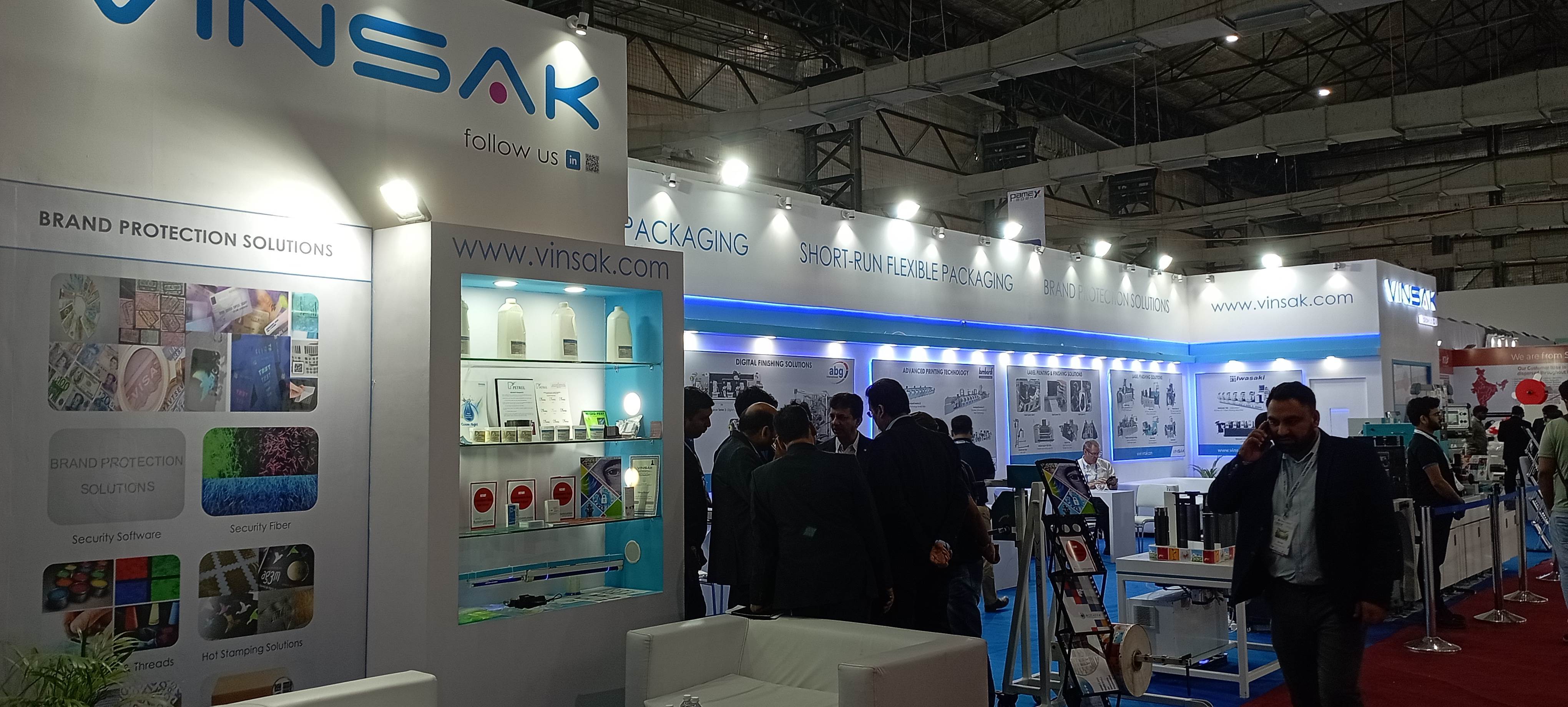
Brand approach: In today's world, it is important for brands to use various security measures to protect themselves against potential threats. There is no one-size-fits-all solution, and each industry must have customised defences in place. For example, pharmaceutical companies may use non-replicable QR codes, holographic strips, and variable guilloche patterns to protect the health of consumers.
Diverse range of products: Counterfeiting is a significant problem in certain product ranges, with rates ranging from 25-30%. Vinsak provides a variety of solutions to help protect brand identity. For example, the variable inkjet printer is perfect for printing variable QR codes, barcodes, and guilloche patterns on labels and packaging materials, allowing for customisable security features. Further, the high-build system also enhances labels with embellishments such as gold and silver, adding intricate details that are difficult to replicate. The security inks have been designed specifically for high-value documents like degree certificates, passports, and bonds, providing authenticity and protection against fraud.
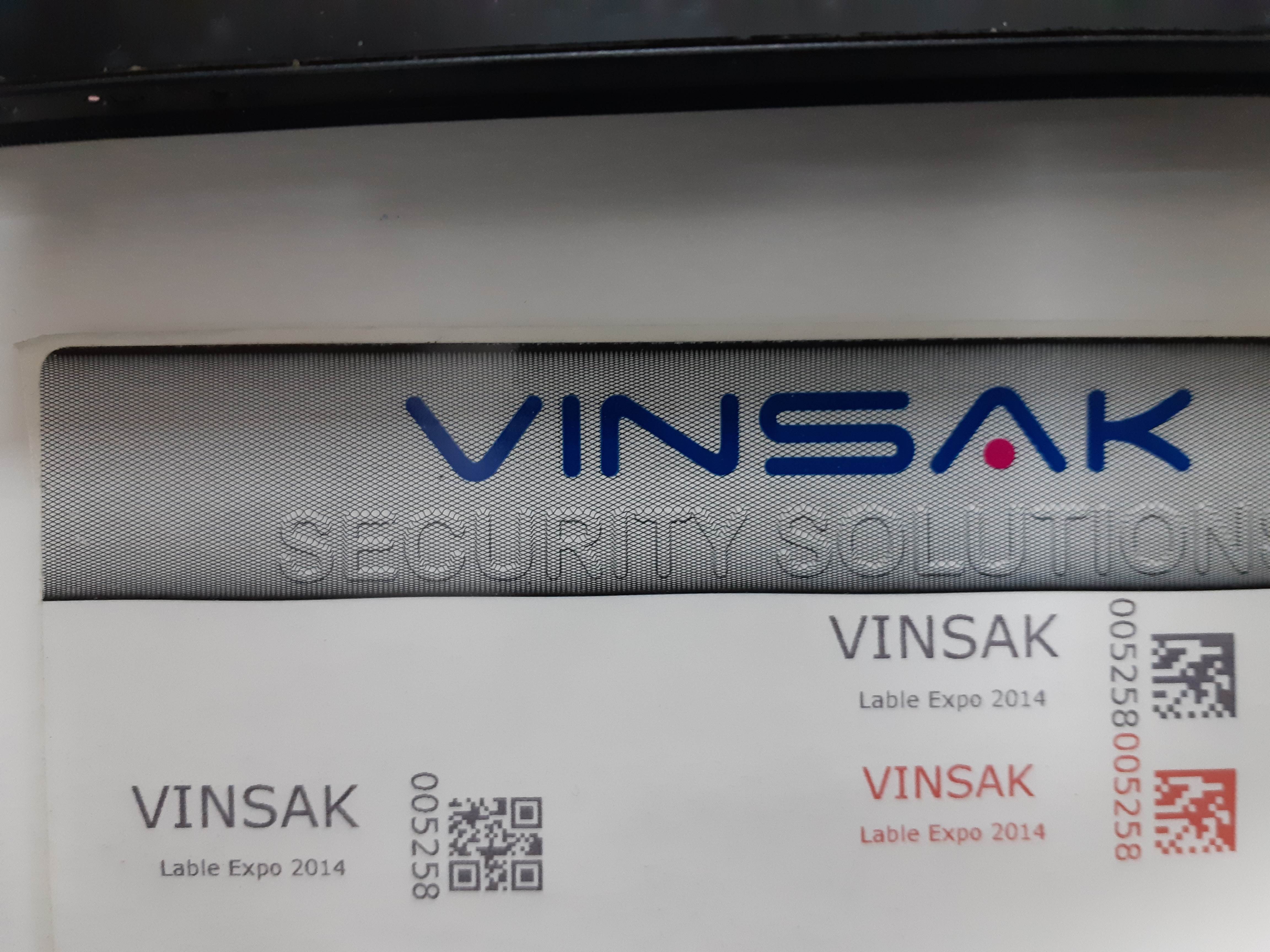
Red digital inks
Fake vs non-fake: Distinguishing between fake and counterfeit items is crucial. Counterfeit goods closely resemble the original but are not manufactured by the original creator. Buyers may unknowingly purchase counterfeit products, as the differences are often subtle. To confirm authenticity, one must examine security features. In contrast, fake items are easier to spot due to inferior quality in logos, size, colour, and printing. While preventing the purchase of fake items is challenging, raising awareness about checking for security features can help consumers avoid falling victim to counterfeit products.
Newer solutions: Vinsak tackles this problem with a two-pronged strategy. First, Vinsak's product offerings include security inks, digital inkjet solutions, diverse substrates, security software, and track-and-trace technologies. Secondly, it prioritises education, empowering people to make informed purchasing decisions. We advocate checking for security features before buying, including scanning QR codes when available, which provide insights into the product's journey, enhancing transparency and trust.
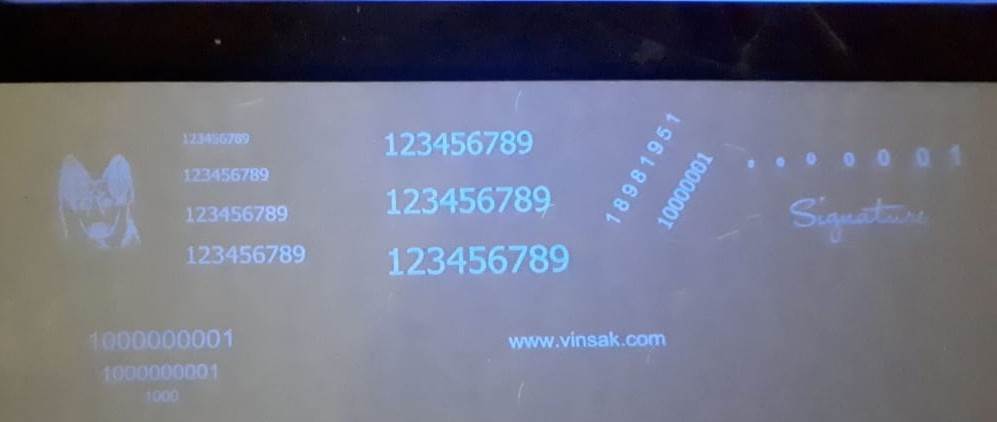
Fluoroscent digital security inks
Anti-counterfeiting solutions and ROI: Today, brand owners recognise they are up against competitors and counterfeit products. Brands can opt for covert or overt technology, covert solutions are not visible to naked eyes but the brand owners know how to identify them, while on the other hand overt solutions are visible to naked eye and the customer him/herself can check the authenticity but the brands should heavily promote and make customers aware of the feature. Evaluating return on investment (ROI) should extend beyond immediate financial gains to include brand equity. Taking measures to fortify the brand against counterfeiting simultaneously enhances brand equity, salience, and, ultimately, brand value. While all our solutions are viable, the required protection level varies by industry. We specialise in crafting customised solutions tailored to each brand's unique needs.
How to leverage the technological possibilities: Security solutions typically fall into three categories. Firstly, some are visible to the naked eye, known as overt solutions, like watermarks and holograms. Secondly, some require UV light for detection, such as security inks, which are covert solutions. Lastly, there is a category that includes QR codes, which necessitate smartphones for scanning. Vinsak has also developed colour-changing labels, which can be authenticated using mobile torch. In India, smartphone penetration currently stands at 71%. This figure is projected to reach 100% by 2040. Brands should capitalise on this remarkable growth by investing in smart and connected packaging solutions.
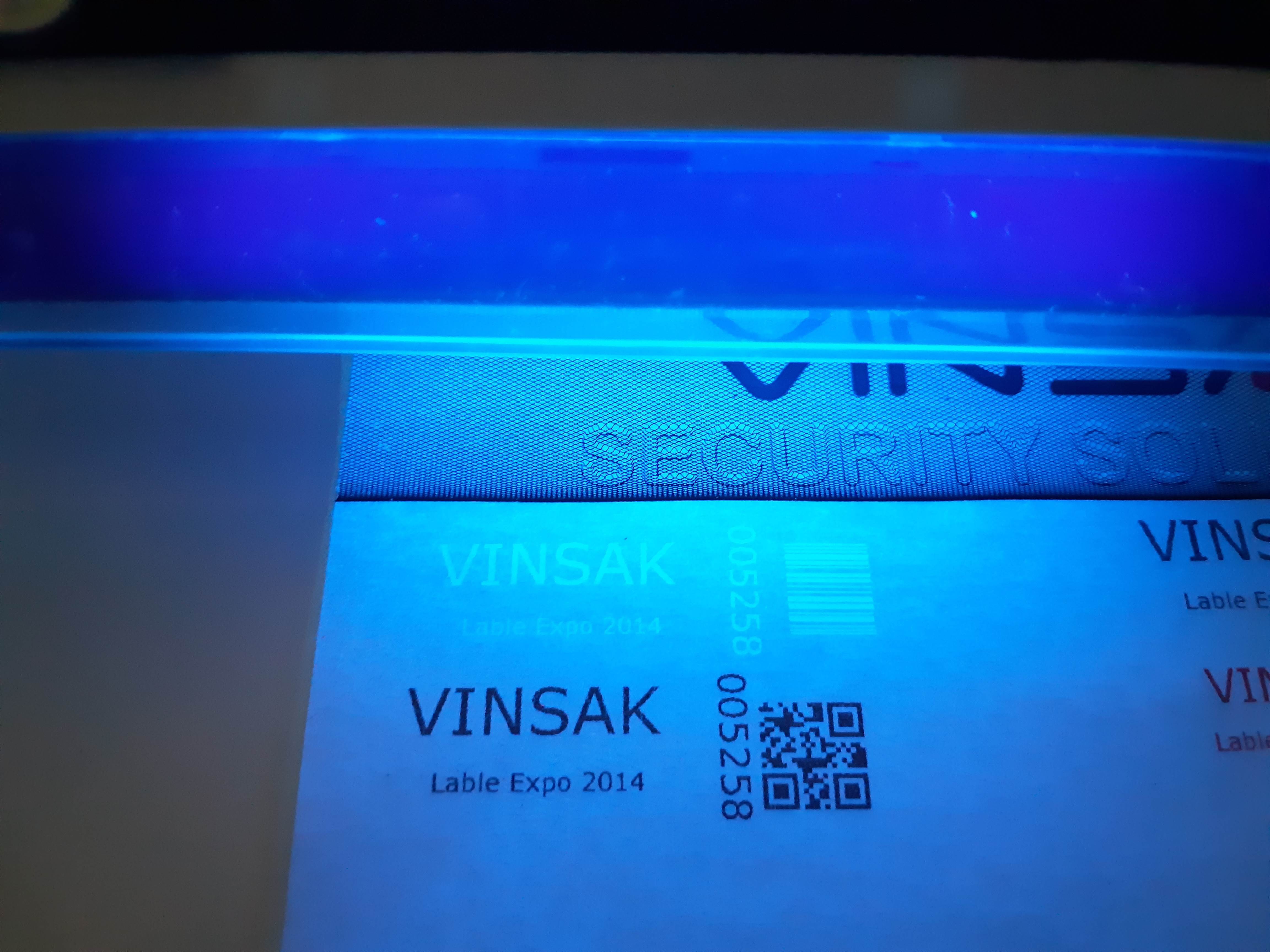
Vinsak's fluorescent security inks under UV light
Fasiculus: At Fasiculus, the goal is to elevate packaging into a smart and interconnected medium. With the increasing reliance on smartphones, integrating connectivity into packaging becomes imperative. The most accessible method is through QR codes, which facilitate automatic data capture. While NFC chips or RFID tags offer more functionality, they come at a higher cost. However, QR codes have become widely compatible across different substrates, from metal cans to paper packs, glass bottles, labels, and mono cartons, making smart packaging easily accessible and interconnected across various forms.
How non-clonable are QR codes: Simply relying on a generic QR code may not effectively deter counterfeiters. Implementing additional layers of security increases the difficulty of counterfeiting. Solutions like "seal vector", which is a bank-level security feature where dense QR code can be printed on any substrate, and the authentication is done via an app; apart from these, there are variable QR codes, embellished QR codes, and QR codes printed with security inks add complexity, making replication highly challenging.
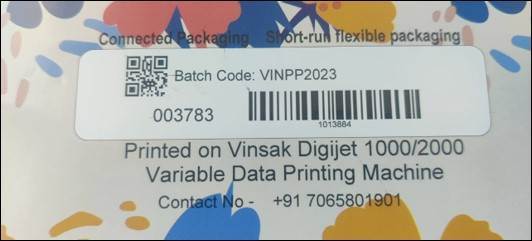
Authentication boost: QR codes
Innovations: The market is constantly evolving, with products tailored to meet specific needs. Therefore, it is crucial to understand these requirements to offer the most suitable solutions. While innovation is vital, it must align with market demands to be successful. Innovations should be market-fit, delivering performance across all levels. When manufacturers meet these criteria, they do a fantastic job, ensuring their products effectively address consumer needs and preferences.
Outreach with government officials: The current government has placed significant emphasis on technology and digital initiatives, which is evident in the success of UPI. The reduced circulation of physical currency correlates with a decrease in counterfeit notes. To combat the counterfeiting problem, a public-private partnership (PPP) approach should be adopted. This collaborative effort can focus on educating the public, promoting smart consumer choices. With regard to GST loss, it is not a significant number to worry about. The counterfeiter will be paying GST while acquiring materials anyway.
Guru mantra for SME and MSME units in India: A well-defined regulatory framework is essential for the efficient operation of any enterprise. The government's efforts to streamline licensing and permits have eliminated unnecessary bureaucratic hurdles, but implementing a single window for obtaining most licenses would further enhance efficiency and convenience for businesses. A guru mantra for success could be to prioritise transparency and sustainability in all operations. It is encouraging to see government support for such initiatives, fostering an environment conducive to growth and responsible business practices.












 See All
See All